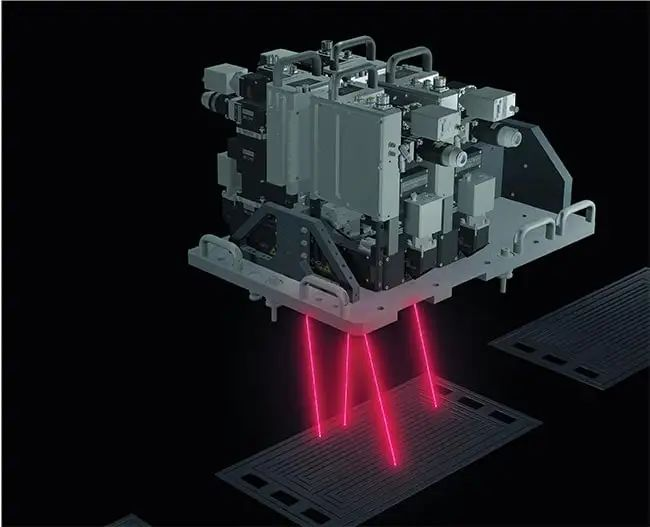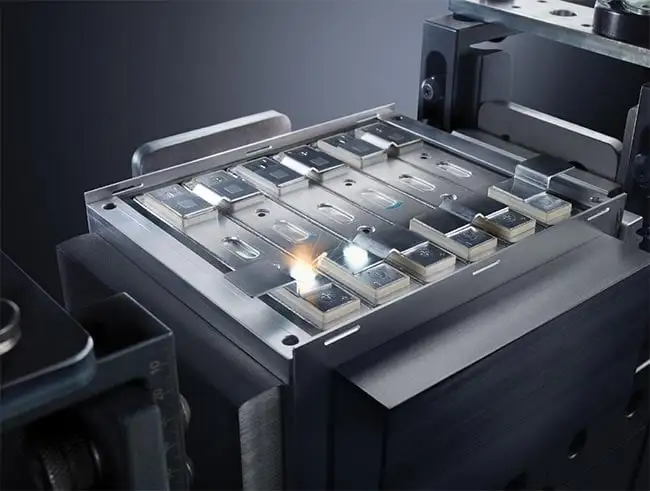 中
中
 400-9667-009
400-9667-009
 中
中
 400-9667-009
400-9667-009
Today, automakers around the world are facing increasing pressure to increase production. Countries such as Japan, Canada and the United Kingdom have introduced relevant policies requiring that new models released in 2035 must be new energy electric vehicles. States in the United States are also implementing various policies related to new energy vehicles. New energy vehicles are creating a new wave around the world.

In the manufacture of new energy vehicles, laser welding of bipolar plates, battery contacts, hairpins and surface coolers on automotive battery trays is an essential process
(Image provided by Scansonic)
Although many people have started to drive new energy vehicles, not everyone likes new energy vehicles. Battery life, imperfect charging facilities, and most people's lack of detailed understanding of new energy vehicles make most people still prefer traditional gasoline vehicles. If consumers are to dispel these concerns about new energy vehicles, they must be conquered by technology. Laser welding is an efficient production technology for processing new energy vehicles. It can connect different materials, facilitate the processing of lighter parts, and improve the precision level required in various production links. In addition to efficient production, laser welding also helps to reduce manufacturing costs by reducing material waste and improving production efficiency.
In the approximately ten years since the advent of laser welding technology, laser welding technology has significantly improved in speed and quality. In particular, the large-scale use of aluminum and copper has further expanded the application scope of laser welding technology, especially in the thousands of applications in the field of new energy, and welding on power batteries.
Without lasers, there would be no new energy vehicles
It can be said that there would be no new energy vehicles without lasers. From batteries to complete vehicles, high-power laser welding has proven its importance in the production of new energy vehicle batteries.

Electric vehicles and energy storage use thick copper busbars. The development and processing of these components requires high laser power and excellent beam quality.
(Image courtesy of TRUMPF)
According to TRUMPF's estimates, when laser welding was used in new energy vehicles in 2017, the welding rate of the can lid on the prismatic battery cell was 60 mm/s. However, by now, the laser welding rate on the market has reached 500 mm/s, which is more than 8 times faster, and the yield rate has also increased by 99% or more. More advanced lasers can also achieve "dynamic welding", where the robot continuously and smoothly completes the entire welding process of the battery pack, shortening the welding time by 20%-40%.
For battery manufacturers,High power infrared laser(Power: 3-8 kW, beam parameters: 2-4 mm·mrad range) are the most popular. New energy vehicle manufacturers often use these lasers with additional beam optimization mechanisms to increase the power and speed required for new energy vehicle production.

Sealing prismatic battery cases requires spatter-free welding, process stability, and dielectric-tight welds without pores, cracks, or unwanted seam buckling (left); manufacturers use lasers in the infrared or visible wavelengths to produce prismatic cells.
(Image courtesy of TRUMPF)
Visible lasers are sometimes used for welding batteries. Engineers are particularly fond of green lasers. These green lasers can reach power levels similar to infrared (IR) lasers, while minimizing spatter and achieving consistent weld penetration. Green and blue lasers are better suited for welding materials such as aluminum and copper because of their shorter wavelengths, which produce cleaner welds.
Lasers in the infrared and visible bands can be used to weld prismatic batteries, with a rate of 40 cells per minute. In contrast, similar processes in the early 2000s could only process 8 parts per minute. Manufacturers typically use 15 μm single-mode lasers with a focus diameter of 60 to 70 μm. This precision requires advanced optics and equipment that can work synchronously with the laser source on a microsecond time scale. The combination of lasers and welding optics systems ensures the consistency and quality required for mass production.
In addition, ultrashort pulse and CO2 lasers can be used for battery cell molding and precision manufacturing of electronic components, and several laser companies have developed related laser solutions to meet the needs of automakers.
Laser surface structuring is considered a promising technology that can improve the service life and performance of battery electrodes. It has the advantages of extremely high precision, non-contact process and high efficiency, and is one of the alternatives for large-scale battery production. Luxinar has developed 1000W CO2 lasers and ultrashort pulse lasers, which they believe will play an important role in future battery development. At high power density for fast charging/discharging, femtosecond laser surface structuring is used to introduce micropores into the active layer of battery electrodes using ultrashort pulse lasers. By then, lithium battery separation will no longer be a problem.
In addition to the continuous improvement of welding efficiency, the development of certain new processes has also promoted the progress of laser welding in the field of new energy vehicles. They rely more on laser welding to complete some operations that cannot be achieved by traditional methods. For example, the foil welding of batteries. Traditionally, these parts are welded by ultrasonic welding. But when ultrasonic welding foils, there is a limit to the stacking thickness of foils. So, when companies want to make more compact battery cells and increase the charging rate of each battery itself, they will use lasers to weld more foil stacks.
Automation and artificial intelligence are the future of laser welding technology
Over the past five years, laser welding has been advancing with greater power, more precise welding, and a wider range of applications. However, the future of laser welding may be to increase its automation rather than simply increase its strength.
The quality of a weld is usually judged by the depth of the weld, the width of the weld interface, and the conductivity of the joint. Artificial intelligence can help to quickly and accurately evaluate these indicators. Lasers and automation complement each other because the types of processes they involve require extremely high precision. In the future, artificial intelligence may not only help detect various defects, but also program the laser and correct errors in real time. Currently, artificial intelligence can detect welds that do not meet quality standards and alert technicians to correct them.
Although people focus on how to increase energy density, cut costs, and develop alternatives, the automation of lasers and the combination of artificial intelligence also play an important role in the precision manufacturing process of electric vehicles. Process control involving artificial intelligence can optimize the laser cutting of complex geometries in battery electrodes and adjust parameters in real time to ensure high precision and reduce material waste. This helps to ensure the yield rate, which is particularly important when producing batteries in large quantities.
The AI system can also monitor laser equipment in real time, predict when maintenance is needed, avoid sudden equipment downtime, and ensure that the production line can continue to operate efficiently during large-scale battery manufacturing. In the near future, we can imagine that AI models can analyze production data, improve the interaction between lasers and different materials, and dynamically adjust cutting paths or parameters to make manufacturing more efficient, lower energy consumption, and better material utilization.
Unlimited possibilities of laser welding
Laser welding continues to play an integral role in manufacturing as demand for new energy vehicles continues to grow. In addition to battery assembly and electric vehicle production, laser welding is likely to maintain its processing dominance in other applications.
In fact, among many laser-based and laser-related manufacturing processes, laser welding is likely to exist for a long time and become a product of a certain era. In addition to new energy vehicles, manufacturers can also consider investing time and resources in the development of hydrogen-powered vehicles or fuel cell-powered vehicles. But no matter what the power source is, laser welding will definitely play a key role.